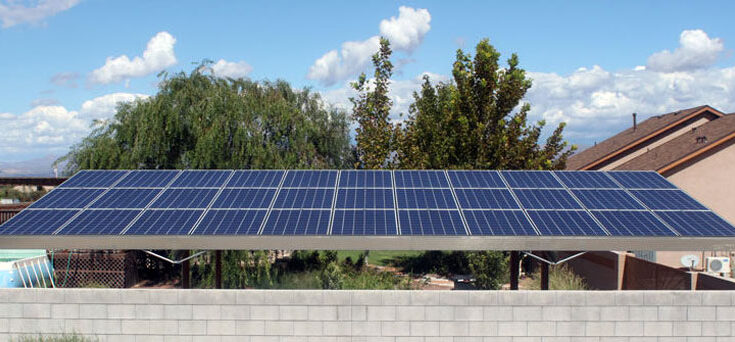By Jon Johnson
SAFFORD – The city of Safford’s new proposed solar credit program will utilize a hybridized net metering model, with any excess solar generation being calculated on a monthly basis instead of real-time.
The Safford City Council received an update on the proposed new solar credit program during its Monday night meeting, in which the council unanimously voted its “Intent to Increase Rates” for its utilities. A public hearing on the proposed utility rate changes is scheduled for Oct. 13, and the final vote is scheduled for the council’s Oct. 27 meeting. Both meetings will be held at the Safford Library at 808 S. 7th Ave., starting at 6 p.m.
The proposed utility rate changes are the result of the city’s Utility and Service Rate Study, which recommends raising rates for all utilities except for electricity.
During last Monday’s meeting, Safford Finance Director Troy Bingham gave a presentation on the proposed utility rate changes and expounded on the proposed changes to the solar program, which includes a new $6 monthly administrative fee.
Currently, Safford provides net metering solar credits on a one-to-one basis, with whatever excess generation being calculated on that same rate on a monthly basis. Moving forward, the city proposes to offer a one-quarter credit for any excess power generated at the end of each month, as calculated on the 20th of every month. This means the city will still have a one-to-one credit during the month, and any true excess generation will be credited at 25 percent. This is an important distinction as solar producers often create excess electricity during the day, which goes onto the grid and then take it back at night when the solar is not producing electricity. In the Safford model, solar producers will still receive a complete kWh for every kWh produced. With any extra production at the end of the month given a 25 percent credit.
This differs from how the Arizona Corporation Commission (ACC), which regulates various utilities, including the Graham County Electric Cooperative, but not Safford’s, handles its solar export rate. With ACC-run utilities like the Co-op, excess generation is measured in real time. A solar producer is credited with roughly one-quarter of its retail value for any power put onto the grid, and any power flowing back from the grid is charged at a full rate. The ACC voted to do away with net-metering on Dec. 21, 2016; however, solar producers that already had systems were grandfathered in with continued net metering for the next 20 years.
For Safford solar users, the change will likely be mostly negligible except for those who specifically designed their solar systems to build up credits during the spring and winter months for use in the summer when electricity demand is higher. Several solar systems were designed like this to take advantage of Safford’s previous solar credit program.
The city will buy out existing credits for solar customers before transitioning to the new system.







